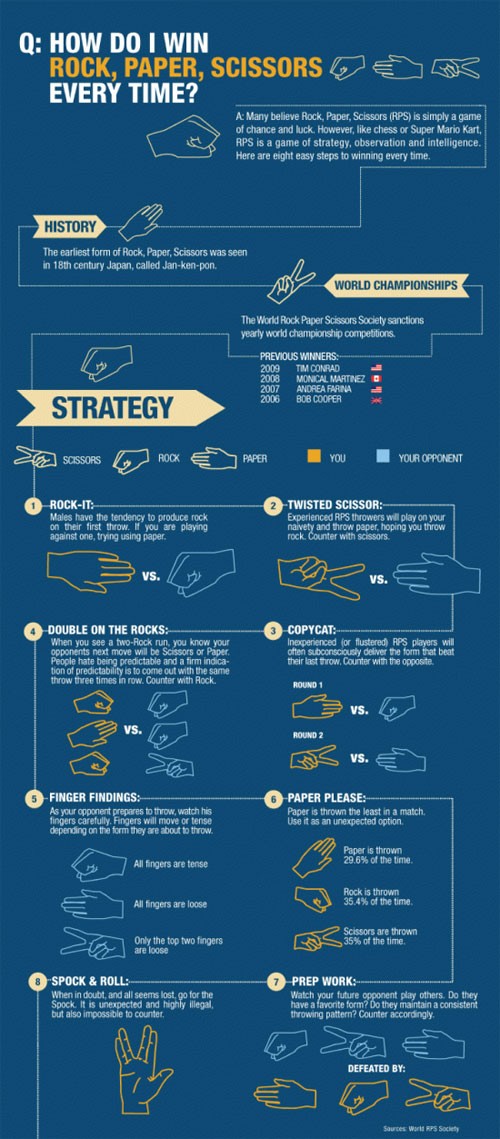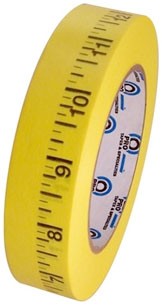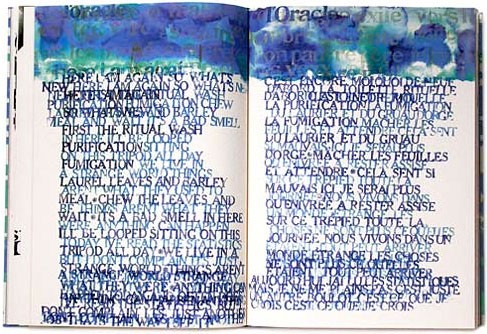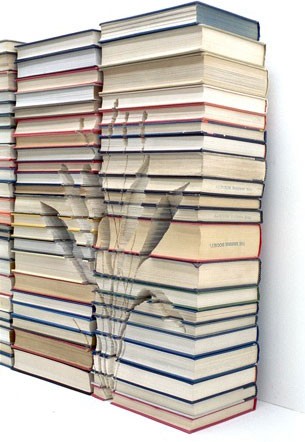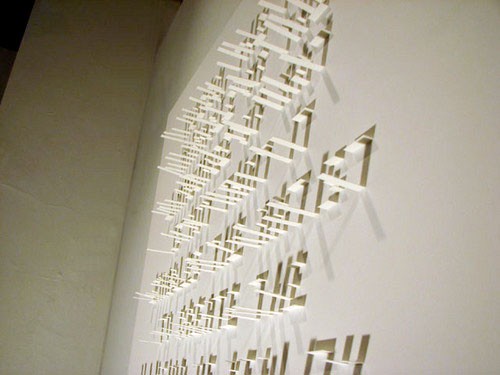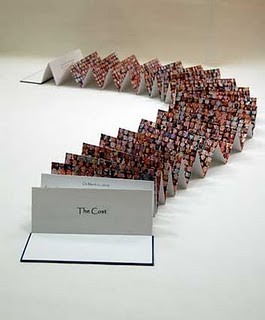My husband got me watching the TV show In Plain Sight with him by convincing me I wanted to see a show set in our new home — New Mexico. On an episode we watched recently, the 2 lead characters played rock-paper-scissors to determine who would have to do something neither wanted to do. I immediately thought that might be a good tool for me — moving and getting our new house in order has been full of chores no one wants to do (who’s going to call the city recycling again because they missed our pickup? Or worse, who’s going to call the manufacturer yet again because the appliance we bought has broken for the Nth time — I finally got them to take it back as a lemon…) I got my husband to agree to the rock-paper-scissors decider game, but then I saw the poster below (here) explaining how to win rock-paper-scissors every time — which I read immediately, and now can’t in all honesty play it with him. (Who knew there were tournaments and world championships!)
![]() And while this post isn’t about book arts, it is about a well designed broadside…
And while this post isn’t about book arts, it is about a well designed broadside…

